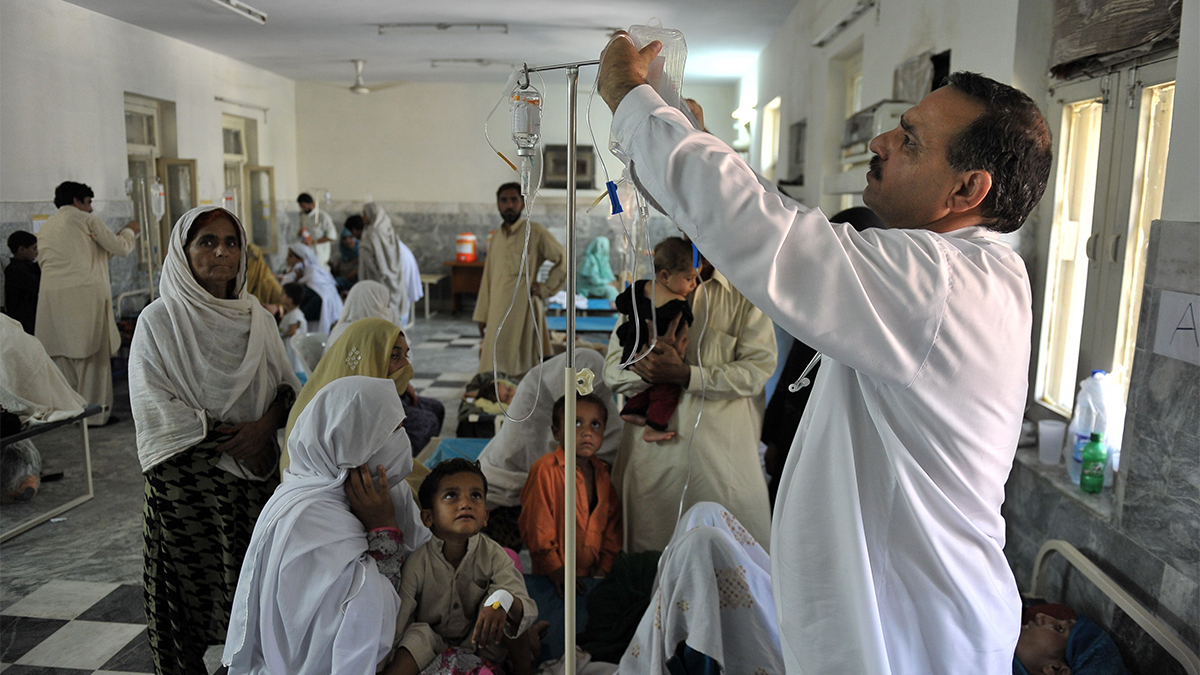By UNCTAD Secretary-General Rebeca Grynspan

© thomas Koch/Shutterstock | Children's hospital in Peshawar, Pakistan. High public debt undermines a government's ability to provide basic services such as health care.
Unstable balance sheets are a threat to our collective financial stability
There is an alarming tendency among the international community to regard debts in the developing world as sustainable because they can, after some sacrifice, be paid off.
But this is like saying a poor family will stay afloat because they always repay their loan sharks. To take this view is to overlook the skipped meals, the foregone investment in education and the lack of health spending that forcibly make room for interest payments. This sort of debt trap is a social catastrophe in the making. Ten years from now, the debt may be repaid, but the family will be ruined.
This is the dilemma facing many developing countries, both big and small. The pandemic, cost of living crisis and rising interest rates have brought them to a point where they can only pay their debts by way of austerity or foregone investment in the sustainable development goals (SDGs). Their debts are sustainable in that they can be repaid, but unsustainable in every other way.
Furthermore, this full-blown development crisis with debt distress at its core also threatens a new lost decade for much of the world economy.
The repeat of a 1980's-style debt crisis that could in turn threaten global financial stability is perceived to be marginal. But the public debt of developing countries, excluding China, reached $11.5tn in 2021. By some accounts, serious debt problems are largely confined to a small share of this figure, owed by highly vulnerable low-income countries such as Chad, Zambia or Ethiopia.
But the situation is deteriorating rapidly. During the pandemic, government debt ballooned by almost $2tn in more than 100 developing countries (excluding China), as social spending went up while incomes froze due to lockdowns. Now, central banks are raising interest rates, which exacerbates the problem. Rising rates have meant capital flight and currency depreciation in developing economies, as well as increasing borrowing costs. These factors have pushed countries such as Ghana or Sri Lanka into debt distress.
In 2021, developing countries paid $400bn in debt service, more than twice the amount they received in official development aid. Meanwhile, their international reserves declined by over $600bn last year, almost three times what they received in emergency support through the IMF Special Drawing Rights allocation.
Foreign debts are therefore eating an ever-larger piece of an ever-shrinking national resources pie. As inflation rises, natural disasters become more frequent and food and energy imports rise in price, countries need more, not less, contingency planning assistance.
A much bolder approach is needed. Recent efforts by the international community to agree on large-scale emergency debt measures have faltered. This is despite important efforts at the G20 through the now-discontinued Debt Service Suspension Initiative, and the Common Framework for Debt Treatments, which is in need of crucial improvements, such as suspending payments during negotiations and an extension to middle-income countries in debt distress.
The failure of these efforts has revealed the complexity of existing procedures, characterised by creditors who refuse to engage in restructuring with extraordinary powers of sabotage. Crisis resolutions are often too little, too late. The world lacks an effective system to deal with debt.
An independent sovereign debt authority that engages with creditor and debtor interests, both institutional and private, is urgently needed. At a minimum, such an authority should provide coherent guidelines for suspending debt payments in disaster situations, ensuring SDGs are considered in debt sustainability assessments, and providing expert advice to governments in need.
Furthermore, a public debt registry for developing countries would allow both lenders and borrowers to access debt data. This would go a long way in boosting debt transparency, strengthening debt management, reducing the risk of debt distress and improving access to financing. Progress on both these fronts could begin with an independent review of the G20 debt agenda: India’s presidency may bring a historic opportunity to succeed where others have faltered.
Tackling the current global debt crisis is not only a moral imperative. In a context of growing climate and geopolitical distress, it is one the biggest threats to global peace and security and financial stability. Without supporting countries to become sustainable, their debts will never be realistically repayable.
First published in the Financial Times on Thursday 2 February 2023


